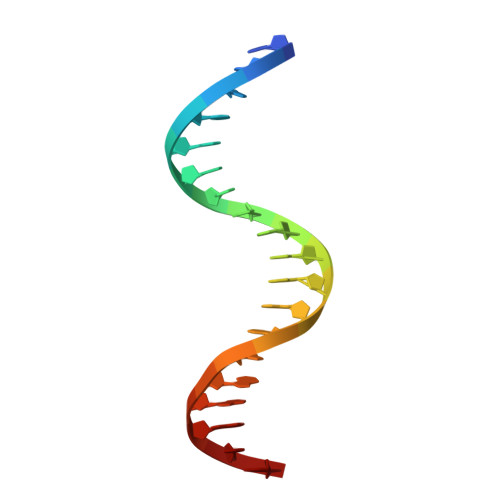Mechanism of DNA degradation by CBASS Cap5 endonuclease immune effector.
Rechkoblit, O., Sciaky, D., Ni, M., Li, Y., Kottur, J., Fang, G., Aggarwal, A.K.(2025) Nat Commun 16: 5243-5243
- PubMed: 40473611
- DOI: https://doi.org/10.1038/s41467-025-60484-z
- Primary Citation of Related Structures:
9DIF, 9DIH, 9NLG - PubMed Abstract:
Bacterial CBASS immune defense systems commonly kill virally infected cells by degrading genomic DNA in a form of cell suicide or abortive infection. We present a high-resolution structure of the CBASS effector Cap5, activated by a cyclic nucleotide, in the act of digesting DNA via tetrameric HNH endonuclease domains. Two HNH domains are in a catalytically active state for cleavage of the DNA strands, whereas the other two HNH domains are in a topologically distinct catalytically inactive state for simply DNA binding. The four HNH domains track one face of the DNA and mark an enzyme that acts as a stand-alone non-specific nuclease. We also show that chromosomally encoded CBASS Cap5 can be extrinsically activated by a cyclic nucleotide, as a step towards potential antibiotics.
Organizational Affiliation:
Department of Pharmacological Sciences, Icahn School of Medicine at Mount Sinai, New York, NY, USA. olga.rechkoblit@mssm.edu.



















